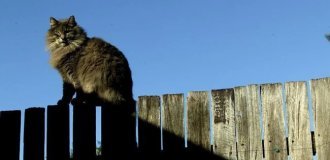Fischer's ghost - a ghost that solved its own murder (6 photos)
"There are more things in this world, friend Horatio, than our wise men dream of." And this story is one of the confirmations of the wise thought of the classic. 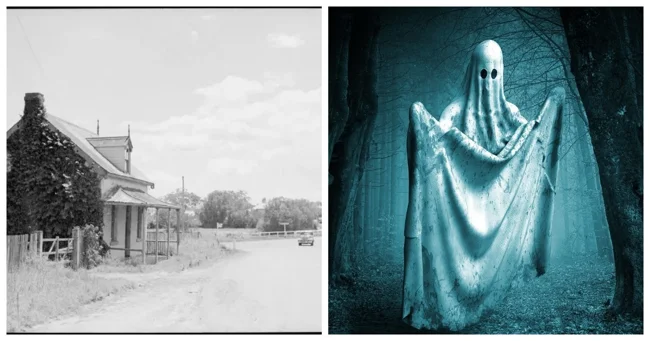
Stories about guests from the other world have fascinated and captivated people throughout the history of civilization and different cultures. Despite the progress in science and technology, the desire for the supernatural continues and fascinates people from all walks of life. Some ghost stories have strong cultural and historical significance. They are often rooted in local folklore, legends and traditional beliefs, reflecting the values, fears and customs of a particular section of society. 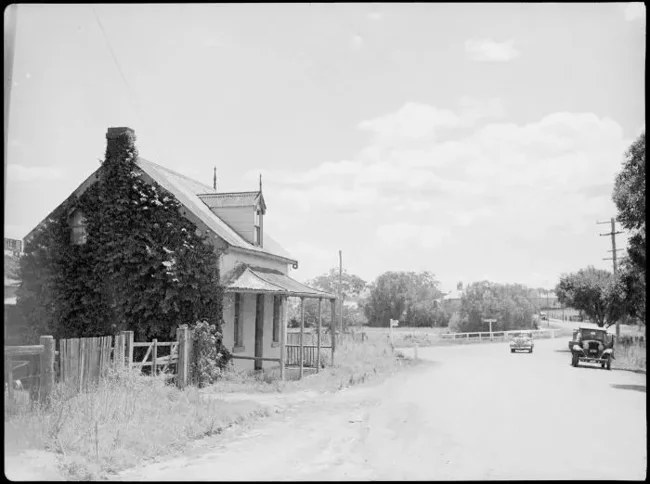
Fisher's Ghost Bridge: Several places in Campbelltown, Australia are named after the Fisher ghost story
Passing down ghost stories from generation to generation helps preserve cultural heritage and builds a sense of collective identity. These stories also act as a kind of warning, like moral lessons, and warn against certain deviant behavior.
One of the most famous Australian ghost stories of the early 19th century is the story of Frederick Fisher.
Frederick Fisher was an English shopkeeper who found himself in a situation where he either unknowingly or intentionally bought counterfeit banknotes during his professional activities. As a result, in 1815, Fred was sentenced to 14 years of exile in Australia. Due to his literacy and education, the man was able to settle down well in Australia and bought several farms and land plots. He also went into the paper industry. 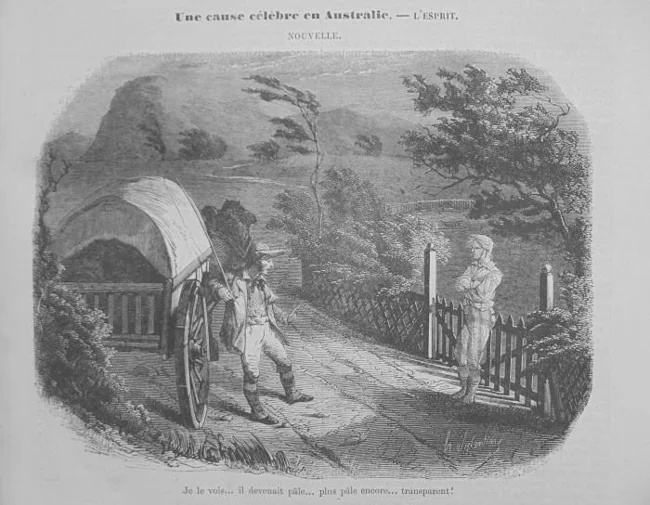
Fisher's ghost allegedly appeared and showed where his body was buried, and helped solve the mystery
In 1822, Fisher, having served half of his sentence, applied for his freedom and permission to purchase some property. Among other properties, Fred eyed a farm in Campbelltown, then a remote rural outpost.
In 1825, Fisher had a falling out with a local carpenter and was sent to prison. Fearing for his farm, Fisher entrusted the care of the property to his neighbor, George Worrell, and gave him power of attorney to manage it during his imprisonment. But when Fisher returned from prison six months later, he found that Worrell had claimed the farm as his own.
On June 17, 1826, Fisher mysteriously disappeared. George Worrell announced that he had sailed for England, and three weeks later sold Fisher's horse and personal belongings, claiming that Fred had sold them to him before sailing. 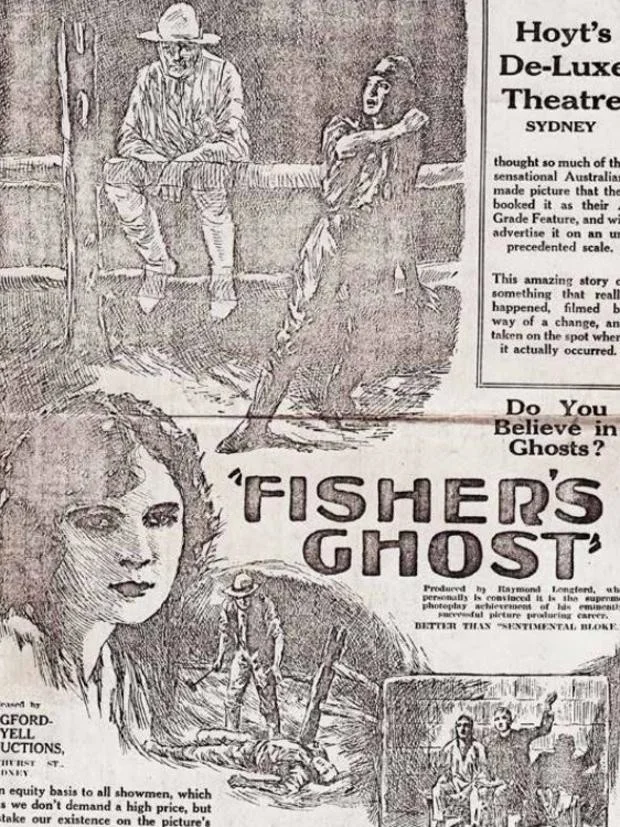
Fisher's ghost has become a legend in Australia and appears in plays
Four months after Fisher's disappearance, a local man named John Farley told a strange story. Farley claimed to have seen the ghost of Fred Fisher sitting on the railing of a nearby bridge. Farley explained that the ghostly figure did not say a word, but merely gestured towards a paddock across the creek. Then it disappeared.
At first, Farley's story was simply laughed off. But the circumstances of Fisher's disappearance looked rather suspicious. And the police began searching the paddock that the ghost was pointing to. To everyone's surprise, the remains of the murdered Fisher were found buried on the bank of a creek.
Based on circumstantial evidence, George Worrell was arrested and charged with the murder of his neighbor. Although George initially denied the charge, he later confessed to the crime and was sentenced to death by hanging. It is important to understand that the story of Fisher's ghost played absolutely no role in the conviction, as such evidence is inadmissible in court. 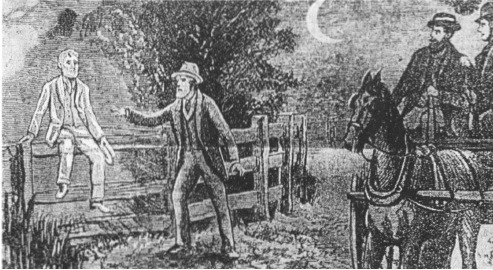
Illustration by British scientist John Henry "Professor" Pepper, who created the 1879 theatrical production of "Fisher's Ghost"
Did Farley really see Fisher's ghost? It is believed that Farley made up the ghost story to hide the true source of information about the location of the murdered man's body. Perhaps Farley witnessed the murder and saw how the body was hidden. He wanted to report it to the authorities without implicating himself in the case out of banal fears of being accused of involvement. That's why he made up the ghost story. According to another version, the real witness of the murder, in order to protect himself, dressed up and sat on the bridge waiting for any passerby. When Farley passed by, he pretended to be Fisher's ghost, groaned and pointed to the burial site.
Another possible version is that the ghost story was a hoax - a fabrication by journalists from one of the capital's magazines.
Indeed, there is no mention of a ghost in the court records of this case. The body was discovered not because the ghost of the murdered man pointed it out, but because the police found several blood stains on the fence, which forced them to comb the area. 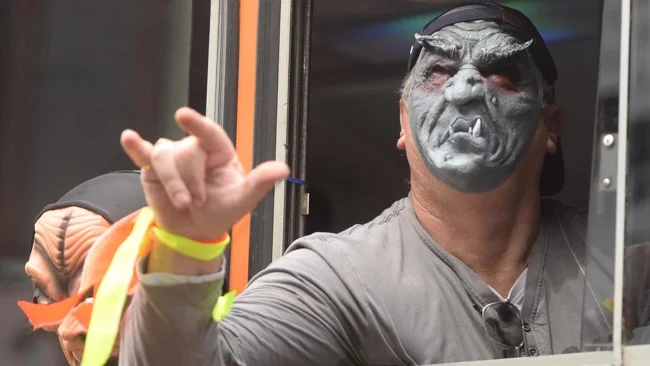
Fisher's Ghost Festival street parade has become an annual event in Campbelltown
The search was assisted by two Aboriginal trackers who soon reported traces of what they thought was "white man's fat" (presumably human tissue) floating in a creek. They then came across a spot where the ground looked distinctly loose. They dug it up and found Fisher's body.
However the ghost story originated, it has since become a fixture in popular folklore and a vivid part of it. Now, every November, the city of Campbelltown holds the Fisher Ghost Festival to commemorate one of Australia's most famous ghosts. The creek where the body was found has been named Fisher Ghost Creek.







